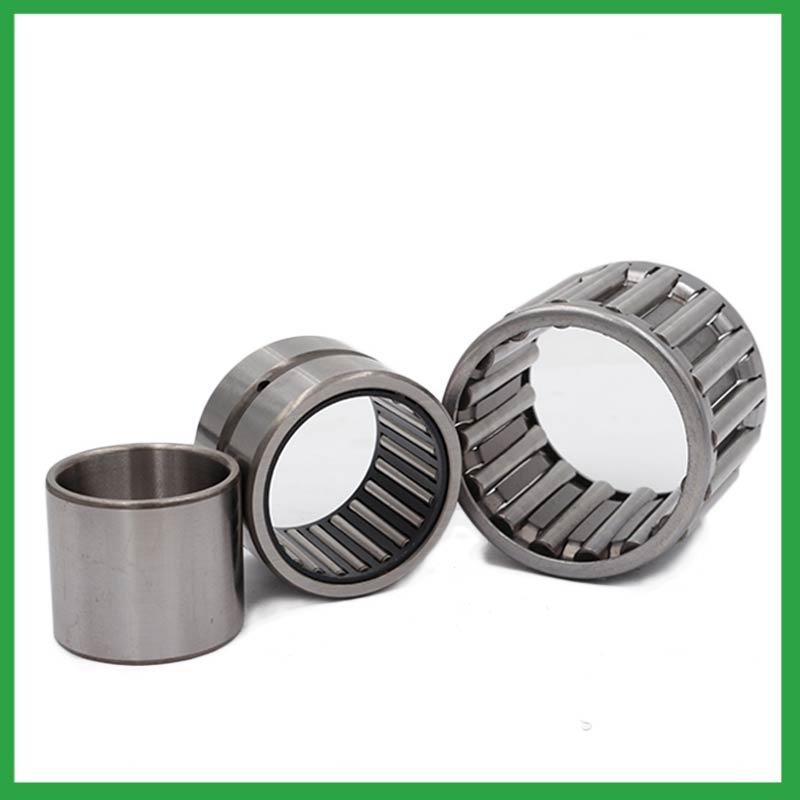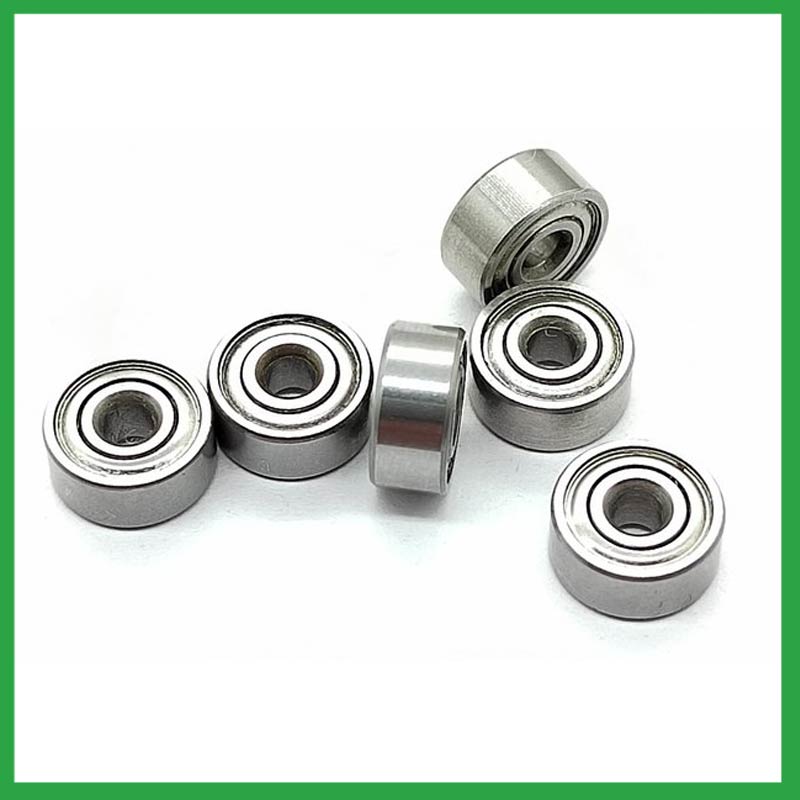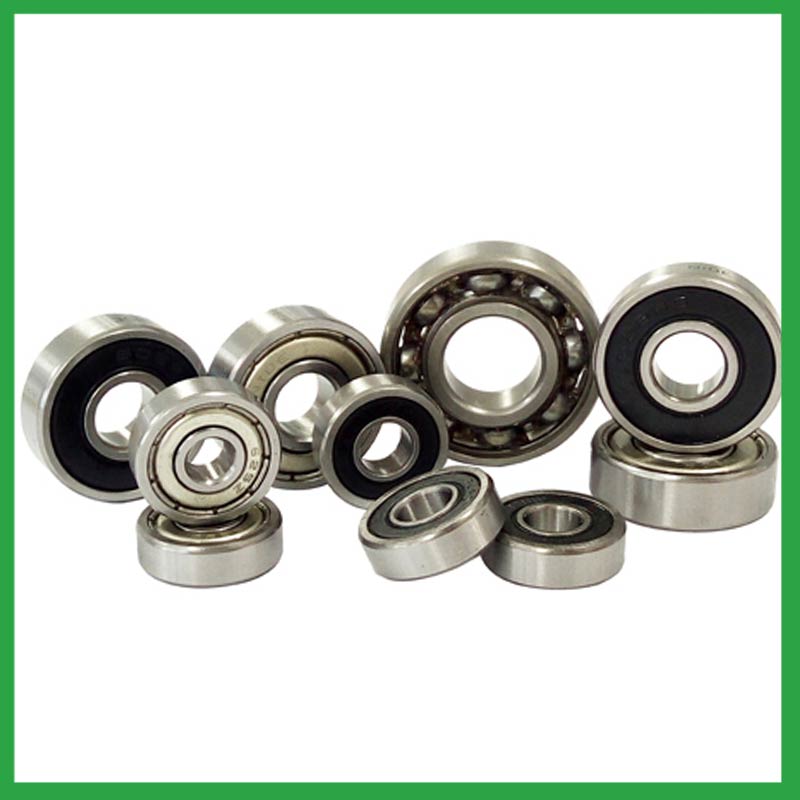2024-03-07
Ningbo Haishu Nide International Co., Ltd is one of the leading bearing manufacturers in China. We are a well-known supplier of high-quality insulation paper,magnet,carbon brush,commutator,shaft,thermal protector,fan,deep groove ball bearings, spherical roller bearings,ball bearing,motor cover and lamination. Our products are widely used in fields such as electric automotive motor,fan motor,washing machine motor,BLDC motor,air condition motor,compress motor,water pump motor,electric bicycle motor,single and three phase induction motor,servo motor. We are proud to provide customers with the expected product knowledge, applied professional knowledge, quality control, and consistent reliable service.
We have modern computerized machinery and equipment to produce high-precision bearings. Our company is also equipped with complete chemical and metallurgical laboratories as well as standard room facilities.Nide has offices in India, Brazil, Korea, Turkey, and Argentina, good sales and service net work allow us to access and offer service to customers over the world easily and promptly.
Ball bearing---FAQs Guide
1.What is the bearing angle of a ball bearing?
We adhere to the principle of integrity and transparency, and establish long -term relationships with partners, and we attach great importance to this detail. The bearing angle of a ball bearing is the angle formed between the direction of the load and the line of contact between the ball and the raceway. It is typically measured in degrees and can vary depending on the design and application of the ball bearing.
2.As a ball bearing manufacturer,Your product certifications?
ISO9001:2015 certificate,ISO 9001 Certification,CE-stator,etc.
3.What scenarios are ball belt bearings suitable for?
1. High-speed applications: Ball bearings are suitable for high-speed applications due to their low friction and smooth operation. They can handle rotational speeds of up to 30,000 revolutions per minute (RPM).
2. Precision machinery: Ball bearings are commonly used in precision machinery such as machine tools, robots, and medical equipment. They provide accurate and smooth movement, making them ideal for applications that require precise positioning.
3. Automotive industry: Ball bearings are widely used in the automotive industry for various applications such as wheel bearings, transmission systems, and engine components. They can withstand high loads and provide reliable performance in harsh environments.
4. Aerospace industry: Ball bearings are essential components in aircraft engines, landing gear, and other critical systems in the aerospace industry. They are designed to withstand extreme temperatures, high speeds, and heavy loads.
5. Industrial machinery: Ball bearings are used in a wide range of industrial machinery, including pumps, compressors, and gearboxes. They can handle heavy loads and provide smooth operation, making them suitable for various industrial applications.
6. Agricultural equipment: Ball bearings are commonly used in agricultural equipment such as tractors, combines, and harvesters. They can withstand the harsh conditions of farming and provide reliable performance.
7. Household appliances: Ball bearings are used in various household appliances such as washing machines, refrigerators, and air conditioners. They provide smooth and quiet operation, making them ideal for these applications.
8. Electric motors: Ball bearings are commonly used in electric motors due to their low friction and high efficiency. They can handle high speeds and provide reliable performance, making them suitable for various motor applications.
9. Sports equipment: Ball bearings are used in various sports equipment such as bicycles, skateboards, and rollerblades. They provide smooth and efficient movement, making them ideal for these applications.
10. Robotics: Ball bearings are essential components in robotics, providing smooth and precise movement for robot arms and other moving parts. They can handle high speeds and provide accurate positioning, making them suitable for various robotic applications.

4.How to determine if the ball bearing is damaged?
Our mission is to provide customers with the best solutions for ball bearing.
1. Visual Inspection: The first step in determining if a ball bearing is damaged is to visually inspect it. Look for any signs of physical damage such as cracks, dents, or discoloration. Also, check for any signs of wear or corrosion on the surface of the bearing.
2. Abnormal Noise: A damaged ball bearing will often produce abnormal noises such as grinding, clicking, or squeaking. If you hear any of these noises coming from the bearing, it is likely damaged.
3. Rough Movement: A healthy ball bearing should move smoothly and without any resistance. If you feel any roughness or resistance when rotating the bearing, it could be a sign of damage.
4. Excessive Heat: A damaged ball bearing can generate excessive heat due to increased friction. If you notice that the bearing is hot to the touch, it could be a sign of damage.
5. Vibration: A damaged ball bearing can cause vibration in the machine or equipment it is installed in. If you feel any unusual vibrations, it could be a sign of a damaged bearing.
6. Irregular Movement: If the ball bearing is not rotating in a smooth and consistent manner, it could be a sign of damage. This can be observed by spinning the bearing and checking for any wobbling or uneven movement.
7. Lubrication Issues: A damaged ball bearing may also cause issues with lubrication. If you notice that the bearing is not properly lubricated or there is an excessive amount of lubricant, it could be a sign of damage.
8. Bearing Failure: If the ball bearing has completely failed, it will be obvious as the machine or equipment it is installed in will not function properly. This can be a result of severe damage to the bearing.
If you notice any of these signs, it is important to replace the damaged ball bearing as soon as possible to prevent further damage to the machine or equipment.
5.How do ball bearings affect the operational efficiency of machines?
We focus on innovation and continuous improvement to maintain a competitive advantage.
Ball bearings play a crucial role in the operational efficiency of machines. They are small, round, and smooth balls that are placed between two surfaces to reduce friction and allow for smooth movement. Here are some ways in which ball bearings affect the operational efficiency of machines:
1. Reduced Friction: Ball bearings are designed to reduce friction between two moving parts. This means that less energy is required to move the parts, resulting in improved efficiency. The smooth surface of the balls also helps to reduce wear and tear on the machine, increasing its lifespan.
2. Increased Speed: The reduced friction provided by ball bearings allows machines to operate at higher speeds without overheating or wearing out. This is especially important in high-speed machines such as turbines and engines, where any increase in speed can significantly impact efficiency.
3. Improved Precision: Ball bearings provide a smooth and consistent movement, which is essential for precision machines. They help to maintain the accuracy of the machine's movements, resulting in better quality products and reduced waste.
4. Lower Maintenance: The use of ball bearings reduces the need for frequent maintenance and repairs. As they reduce friction and wear on the machine, they help to extend its lifespan and reduce downtime, resulting in improved operational efficiency.
5. Versatility: Ball bearings are available in various sizes and materials, making them suitable for a wide range of applications. This versatility allows for the use of ball bearings in different types of machines, improving their efficiency and performance.
In conclusion, ball bearings are essential components in machines that significantly impact their operational efficiency. They reduce friction, increase speed, improve precision, and require less maintenance, making them crucial for the smooth and efficient functioning of machines.
6.How can ball bearings maintain good lubrication?
We operate our ball bearing business with integrity and honesty.
1. Proper selection of lubricant: The type and quality of lubricant used in ball bearings play a crucial role in maintaining good lubrication. It is important to choose a lubricant that is specifically designed for ball bearings and can withstand the operating conditions.
2. Regular lubrication: Ball bearings should be regularly lubricated according to the manufacturer's recommendations. This will ensure that the bearings are always properly lubricated and prevent any dry spots from forming.
3. Correct amount of lubricant: Too much or too little lubricant can both be harmful to ball bearings. It is important to follow the manufacturer's recommendations for the correct amount of lubricant to be used.
4. Proper lubrication intervals: The frequency of lubrication depends on the operating conditions of the ball bearings. In high-speed or high-temperature applications, more frequent lubrication may be required to maintain good lubrication.
5. Cleanliness: Before lubricating, it is important to clean the bearings and surrounding areas to remove any dirt or debris that can contaminate the lubricant. This will ensure that the lubricant can effectively reach all parts of the bearing.
6. Sealing: Proper sealing of the bearing housing can prevent contaminants from entering and damaging the lubricant. This will help maintain the quality of the lubricant and prolong its effectiveness.
7. Temperature control: Extreme temperatures can affect the performance of lubricants. It is important to monitor the operating temperature of the bearings and use a lubricant that can withstand the temperature range.
8. Re-lubrication: In some applications, the lubricant may degrade or become contaminated over time. In such cases, it is important to re-lubricate the bearings to maintain good lubrication.
9. Regular maintenance: Regular maintenance of the bearings, including cleaning and re-lubrication, can help identify any potential issues and prevent them from causing damage to the bearings.
10. Proper storage: If the bearings are not in use, they should be stored in a clean and dry environment to prevent the lubricant from deteriorating. This will ensure that the bearings are properly lubricated when put back into operation.

7.What are the characteristics of simplified ball bearings?
1. Fewer Components: Simplified ball bearings have a reduced number of components compared to traditional ball bearings. This makes them easier to assemble and maintain.
2. Lower Cost: Due to the reduced number of components, simplified ball bearings are generally less expensive than traditional ball bearings.
3. Lighter Weight: The simplified design of these bearings also makes them lighter in weight, which can be beneficial in applications where weight is a concern.
4. Lower Friction: Simplified ball bearings have a lower friction coefficient, which means they require less energy to operate and can run more smoothly.
5. Reduced Noise: The simplified design also helps to reduce noise levels, making them ideal for applications where noise is a concern.
6. Easy to Install: The simplified design of these bearings makes them easier to install, which can save time and effort during assembly.
7. Low Maintenance: With fewer components, simplified ball bearings require less maintenance and are less prone to failure.
8. High Load Capacity: Despite their simplified design, these bearings can still handle high radial and axial loads, making them suitable for a wide range of applications.
9. Corrosion Resistance: Many simplified ball bearings are made from corrosion-resistant materials, making them suitable for use in harsh environments.
10. Versatility: Simplified ball bearings are available in a variety of sizes and configurations, making them suitable for a wide range of applications in different industries.
8.What are the advantages of ball bearings compared to sliding bearings?
We are committed to providing personalized solutions and established long -term strategic cooperative relationships with customers.
1. Lower friction: Ball bearings have rolling elements (balls) that reduce friction between the moving parts, resulting in smoother and more efficient operation compared to sliding bearings.
2. Higher load capacity: Ball bearings are designed to distribute the load evenly over a larger surface area, allowing them to handle higher loads compared to sliding bearings.
3. Reduced wear and tear: The rolling motion of ball bearings reduces the wear and tear on the bearing and the mating surface, resulting in longer service life compared to sliding bearings.
4. Lower maintenance: Due to their design and reduced wear, ball bearings require less maintenance compared to sliding bearings, resulting in lower maintenance costs.
5. Higher speed capability: Ball bearings are capable of handling higher speeds due to their rolling motion, making them suitable for high-speed applications compared to sliding bearings.
6. Better precision: Ball bearings are manufactured to very tight tolerances, resulting in better precision and accuracy compared to sliding bearings.
7. Smaller size and weight: Ball bearings are smaller and lighter compared to sliding bearings, making them suitable for applications where space and weight are limited.
8. Versatility: Ball bearings are available in a wide range of sizes, designs, and materials, making them suitable for a variety of applications compared to sliding bearings.
9. Cost-effective: While ball bearings may have a higher initial cost compared to sliding bearings, their longer service life and lower maintenance requirements make them more cost-effective in the long run.
10. Self-aligning capability: Some ball bearings have the ability to self-align, allowing them to compensate for misalignment between the shaft and housing, which is not possible with sliding bearings.
9.What is a self-lubricating ball bearing?
We are centered on customers and always pay attention to customers' needs for ball bearing products. A self-lubricating ball bearing is a type of bearing that is designed to operate without the need for external lubrication. It contains a lubricant embedded within the bearing material, such as graphite or PTFE, which is released during operation to reduce friction and wear. This eliminates the need for regular maintenance and lubrication, making it ideal for applications where frequent lubrication is not possible or practical. Self-lubricating ball bearings are commonly used in high-temperature, high-speed, and harsh environments.

10.What are the advantages of ball bearings compared to linear bearings?
We focus on teamwork and communication to achieve common goals, We attach great importance to this detail.
1. Lower Friction: Ball bearings have a lower coefficient of friction compared to linear bearings, which means they require less force to move and can operate more smoothly.
2. Higher Load Capacity: Ball bearings can handle higher loads than linear bearings, making them suitable for heavy-duty applications.
3. Reduced Wear and Tear: The rolling motion of ball bearings reduces wear and tear on the bearing and the surface it is moving on, increasing their lifespan.
4. Lower Noise and Vibration: Ball bearings produce less noise and vibration compared to linear bearings, making them ideal for applications where noise and vibration are a concern.
5. Self-Alignment: Ball bearings are self-aligning, which means they can accommodate misalignment between the shaft and the housing, ensuring smooth operation.
6. Compact Design: Ball bearings have a smaller footprint compared to linear bearings, making them suitable for applications with limited space.
7. Cost-Effective: Ball bearings are generally more cost-effective than linear bearings, making them a popular choice for many applications.
8. Easy to Install: Ball bearings are relatively easy to install and require minimal maintenance, making them a convenient option for many applications.
9. Wide Range of Sizes and Types: Ball bearings are available in a wide range of sizes and types, making them suitable for various applications and industries.
10. Versatility: Ball bearings can be used in both radial and axial applications, providing versatility and flexibility in design and use.
Products Tags: Deep groove rolling ball bearing with good sealing